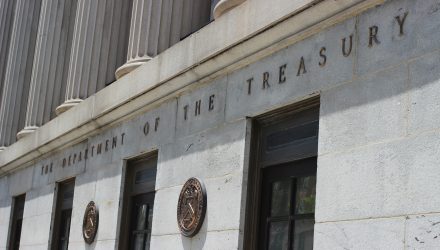The Federal Reserve has boosted interest rates twice this year and last week’s Fed minutes indicate the central bank could pursue two more rate increases before the end of 2018, which has some bond investors evaluating floating rate notes (FRNs).
Floating rate notes, like the name suggests, have a floating interest rate. Specifically, the notes’ have a so-called reset period with interest rates tied to a benchmark, such as the Fed funds, LIBOR, prime rate or U.S. Treasury bill rate. Due to their short reset periods, these floating rate funds have relatively low rate risk.
Exchange traded funds, including the iShares Floating Rate Bond ETF (CBOE: FLOT), deliver access to floaters.
“One of the ways that investors can help navigate a rising rate environment is through exposure to bonds with coupons that adjust, or float, with short-term interest rates,” said BlackRock. “These adjustments mean investors are not exposed to potential price losses, and can also benefit from income increases as rates rise over time.”
Floating Rate Bond Mechanics
As a result of the safe and conservative nature of floating rate bonds, investors should not expect high yields. Nevertheless, Treasury money market funds are so starved for yield that anything with an extra basis point or two and the quality and liquidity of a Treasury security will provide an attractive alternative.
FLOT has 675 holdings and tracks the Bloomberg Barclays US Floating Rate Note < 5 Years Index. The ETF’s effective duration is just 0.16 years. FLOT’s 30-day SEC yield is 2.38%.

